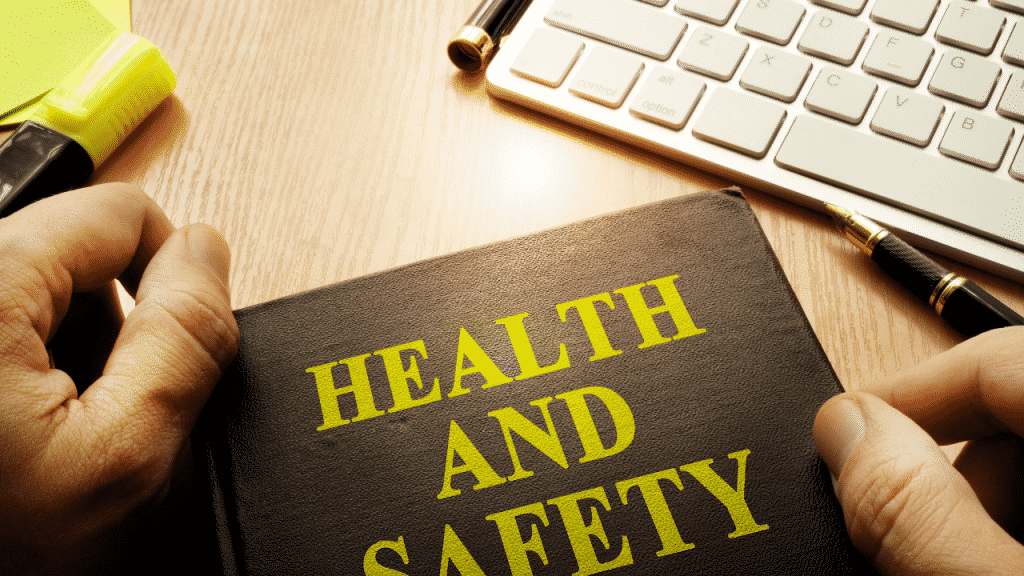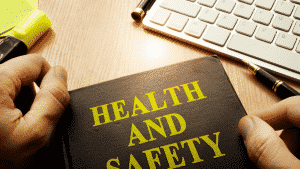This training programme has been designed to provide essential knowledge and understanding of health and safety for employees working in any sector of business, whether manufacturing, commerce, public sector or the service industries. Good health and safety standards rely on employers and employees working together to reduce risks and prevent accidents and ill health arising from work activities.
Employers have a responsibility to provide safe and healthy workplace conditions as well as safe systems and methods for workplace activities. An essential element of any safe system is the knowledge and attitude of employees, and this demands proper training in the basics of health and safety, as well as specific training for individual tasks.
The Level 2 Award in Health and Safety In The Workplace aims to provide employees with health and safety understanding which will enable them to contribute to any health and safety management system.
In particular the programme will enable you to:
Work in a safe and healthy manner and contribute to improving health and safety within an organisation’s policy.
This Course Will Allow Employees To:
- Identify key hazards in their own workplace.
- Understand the importance of health and safety rules and working procedures.
- Report potential health and safety problems.
- Be responsible for their own actions.
The syllabus is generic in nature – it sets out the principles of health and safety.
Health and Safety at Work
Candidates should appreciate the nature of health and safety and be able to:
- State the costs of poor health and safety standards and the benefits of good standards.
- Give common types and causes of work related accidents and ill health.
- Give examples of occupational, environmental and human factors which can affect health and safety.
Health and Safety Law
Candidates should understand the scope of legislative requirements, and be able to:
- Outline the legal responsibilities under the Health and Safety at Work etc. Act 1974 of employers, employees and the self-employed.
- Give examples of specific safety issues covered by regulations including risk assessments, competent persons, and employee consultation.
- Describe how the law is enforced, the enforcement agencies and the powers and actions available to their officers.
- State the possible consequences of non-compliance.
Note: Candidates are not expected to know the specific detail of statutes.
Prevention of Accidents and Ill Health
Candidates should understand the principles of accident and ill health prevention and be able to:
- Define the term ‘accident’.
- State the main effects of stress and give examples of how it can be reduced.
- State how alcohol and drugs can affect safety at work and how risks can be minimised
- Explain the importance of complying with policies on smoking.
- State that incidents of violence that must be reported and give examples of how the likelihood can be reduced.
- State the reasons for accidents to be recorded, and the legal requirements for accident reporting.
Risk Assessment
Candidates should understand that risk assessment is an important technique for accident and ill health prevention and be able to:
- Define what is meant by term ‘hazard’ and give examples.
- Define what is meant by the term ‘risk’, and give examples of factors which are likely to increase risk.
- Outline the risk assessment process.
- Give examples of control measures and the varying degrees of effectiveness.
- State that specialised assessments are required in certain circumstances.
First Aid at Work
Candidates should understand the purpose and importance of first aid, and be able to:
- Explain the requirement for first aid provision dependent on workplace hazards and risks.
- Understand the difference between an appointed person and a first aider.
- Give examples of first aid materials which should be commonly provided.
Candidates are not expected to be able to perform any specific first aid techniques.
Personal Protective Equipment (PPE)
Candidates should understand that PPE is a measure of last resort and be able to:
- Give examples of PPE and explain their function.
- State the employer’s and employees’ responsibilities regarding provision, use, care and maintenance of PPE.
Workplace Health, Safety and Welfare
Candidates should understand the importance of a safe working environment and be able to:
- Describe health and safety aspects of the building structure, design layout and services.
- Explain the importance of good storage, stacking, maintenance and housekeeping.
- Outline the welfare facilities needed including:
- WC facilities, washing facilities, drinking water and rest facilities.
- Describe and give examples of the categories of safety signs.
Work Equipment
Candidates should be aware of the hazards and risks associated with work equipment and be able to:
- State how work equipment can cause injuries.
- Describe suitable control measures including:
- Correct design and construction
- Suitable working environment
- Safe working procedures
- Training and authorisation
- Use of PPE
- Maintenance.
Electricity
Candidates should understand the hazards and risks associated with electricity and be able to:
- Explain the need for installation testing and maintenance by competent personnel, and the need for immediate fault reporting.
- Give examples of methods for improving electrical safety.
- State the key aspects of dealing with electric shock .
F i re Pre v e n t i o n
Candidates should understand the hazards and risks associated with fire and be able to:
- State the elements of the fire triangle and explain how these relate to the causes and control of fire.
- Describe general precautions for fire prevention and safe evacuation.
- Give examples of how fires can be controlled including reference to fire extinguishers and b l a n k e t s .
- State the action to be taken in case of fire.
Occupational Health
Candidates should understand the importance of preventing work related ill health and to be able:
- State the main types of health hazard.
- Give examples of occupational illnesses and diseases.
- Describe a variety of control measures and appreciate the principle of a hierarchy of c o n t r o l .
Hazardous Substances
Candidates should appreciate the nature and risks of hazardous substances and be able to:
- Give examples of hazardous substances and state how they can be identified.
- State that the use of hazardous substances should be minimised, and properly assessed.
- Describe methods for the control of hazardous substances to prevent exposure and protect personnel.
- Explain the need for authorisation and training of personnel.
Ergonomics and Workstation Design
Candidates should understand how workplace, equipment and task design affect health and safety and be able to:
- Give examples of how musculoskeletal disorders can be caused or aggravated by work activities and workstation design.
- Describe the key features of task and workstation design and adjustment which can reduce the risk of musculoskeletal disorders.
- Appreciate the need to follow procedures and instructions, and report early signs of possible p r o b l e m s .
Manual Handling
Candidates should understand the risks associated with manual handling and be able to:
- Give examples of manual handling injuries.
- State the need to minimise manual handling where possible and for manual handling activities to be properly assessed.
- Describe methods to reduce the risk of injury from manual handling including correct lifting techniques.
Noise
Candidates should understand the potential long and short term effects of exposure to noise and be able to:
- State that noise is unwanted sound which may cause annoyance, stress, distraction, hearing damage or loss.
- Describe methods of noise reduction and control.
- State that hearing protection is a last resort but where necessary its use at all times is essential.


